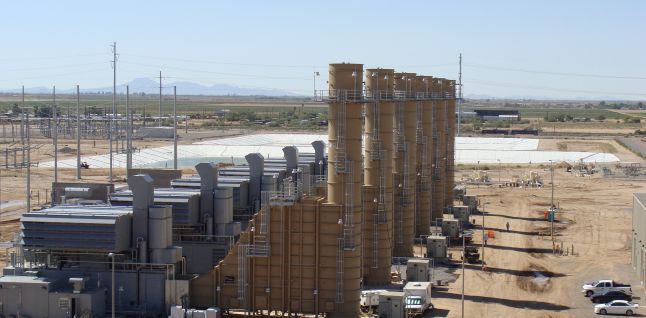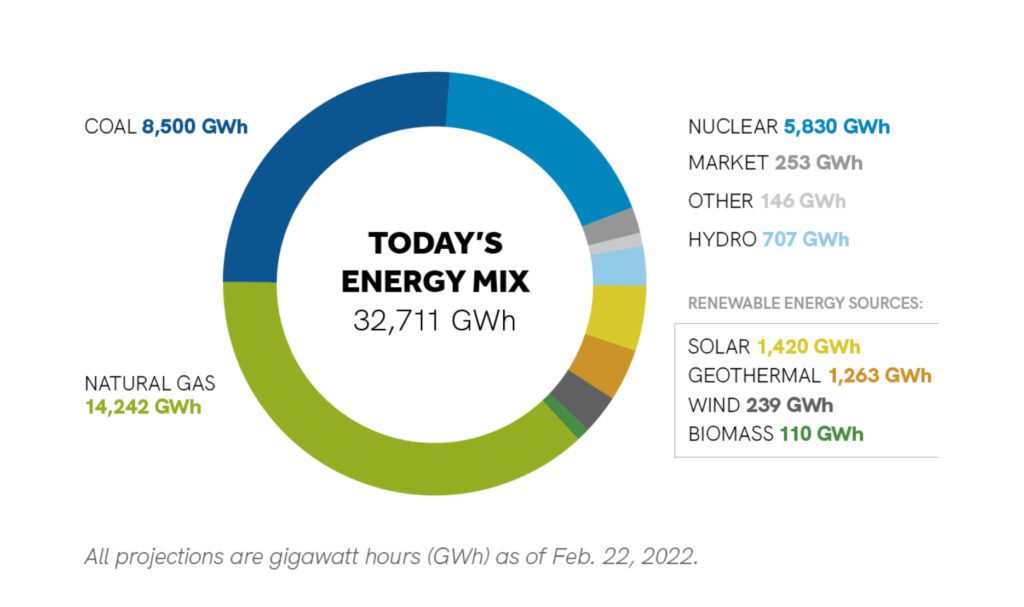SRP's Urgent 575-MW Aeroderivative Natural Gas Expansion Gets Arizona Regulator's Green Light
The Arizona Corporation Commission (ACC) on June 21 issued an amended certificate of environmental compatibility (CEC) for Salt River Project Agricultural Improvement and Power District’s (SRP’s) 575-MW natural gas–fired Coolidge Expansion Project. The measure marks a hard-fought triumph for SRP, which urgently sought the plant’s expansion, arguing it is crucial for near-term system reliability and long-term renewable integration.
SRP unveiled its “fast-track” plans to expand the 575-MWCoolidge Station in August 2021. The public power entity had initially proposed adding 16 51.25-MW GE Sprint PC-NXGEN LM6000s—fast-ramping single-cycle aeroderivative turbines—to the 2011-completed plant’s 12 LM6000 single-cycle turbine units.

The ACC in April 2022, however, disapproved the project’s CEC, although approval had been recommended by the commission’s Arizona Power Plant and Line Siting Committee. ACC commissioners had then cited several concerns about SRP’s application, evidence on the record, and its process to garner enough public participation from residents in the nearby historically Black community of Randolph. (See POWER’s in-depth coverage here.)
While SRP later appealed the decision at a Maricopa County Superior Court, the court upheld the ACC’s initial 4–1 decision. SRP in May 2023 asked a Court of Appeals to reverse the decision. With the ACC’s approval of the amended CEC, SRP will dismiss the pending appeal.
“The amended CEC was made possible, in part, due to the recent settlement between SRP and the Randolph parties,” SRP said on Wednesday. As part of that settlement, SRP agreed to reduce the number of generation units from 16 to 12, and to “slightly” move the location of the new units “to make them less visible to the community.” The settlement notably also limits SRP’s operational use of the new Coolidge Generating Station units to a 30% capacity factor. SRP has noted that the existing facilities at Coolidge typically run in the 5-10% range.
In addition, SRP agreed to add additional air quality measures, including road paving to offset dust in the area, as well as significant funding for community support, and educational and recreational facilities.
“We are grateful to the Randolph community for the opportunity to listen to and address their concerns regarding the Coolidge Expansion Project,” said Bobby Olsen, SRP associate general manager and chief planning, strategy and sustainability executive, on Wednesday.
Olsen noted, however, that SRP is also obligated to provide reliable power to its customers. During its proceedings at the ACC, SRP said the quick-start power was integral to meeting soaring regional demand, including from large industry, residential, and commercial consumers in the Phoenix metropolitan area. The project’s disapproval would impair the reliability of the SRP system, creating a serious risk that there will be insufficient resources necessary to serve anticipated customer electrical demand beginning in 2024, it said. The CEC’s disapproval would also hamper SRP’s ability to integrate additional renewable resources into its system because SRP would lack critical quick-start flexible generation, it suggested.

SRP noted the Coolidge Station expansion is just one facet of SRP’s efforts to transition toward a cleaner portfolio. The company plans to reduce its carbon intensity (carbon dioxide emitted per MWh) by more than 65% from 2005 levels by 2035 and by 90% in 2050. The utility is slated to shutter several coal facilities starting in 2025. These include retiring the 428-MW Craig Unit 1 in 2025, the 428-MW Unit 2 in 2028, the 446-MW Hayden plant in 2027, the 2,040-MW Four Corners in 2031, and the 773-MW Coronado no later than 2032. In addition, it has said it will need 1,000 MW of additional capacity to meet demand by 2025.
“SRP customers are already benefitting from new solar and battery resources that have recently come online—part of a commitment to add 2,025 MW of solar and wind generation and 1,100 MW of batteries, enough to power nearly half a million homes by 2025—while paying some of the lowest energy costs in the West,” it said on Wednesday.
“Flexible, fast ramping generation is critical to meet this obligation,” Olsen added. “The Coolidge Expansion Project both supports that reliability mission and will enable additional solar, wind, and other renewables to be part of our system.”
—Sonal Patel is a POWER senior associate editor (@sonalcpatel, @POWERmagazine).